17 de abril de 2024
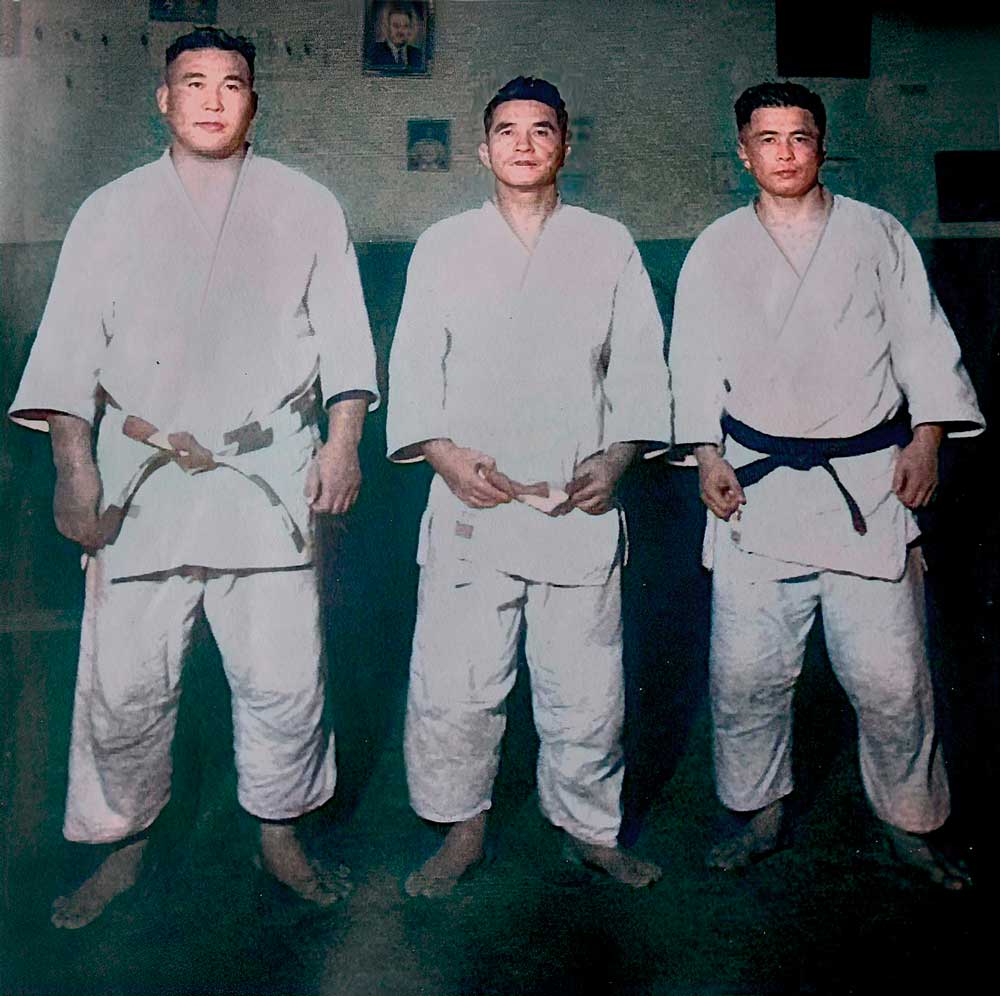
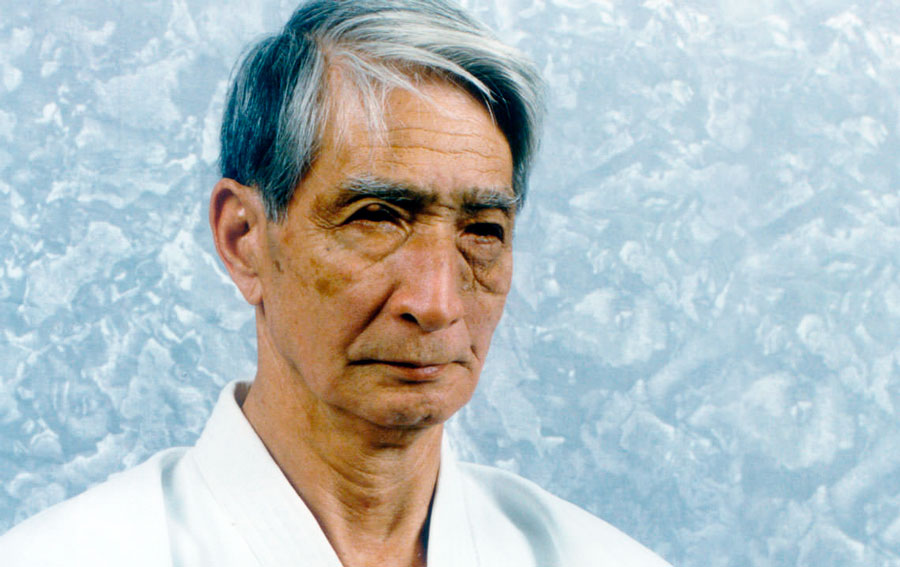 Renshi Hidetaka Nishiyama
Renshi Hidetaka Nishiyama
Hidetaka Nishiyama never surrendered to calls to mischaracterize the karate he idealized, and the ITKF still follows the statute approved at its founding in 1990
History
September 30, 2020
By PAULO PINTO
Curitiba – Brazil
Born on October 10, 1928, in Tokyo, Hidetaka Nishiyama, on the day he turned 5, 5 months and 5 days, was taken by his father, following Japanese tradition, to a teacher of kendo, a martial art developed from of sword fighting techniques.
In 1943, when the world was plunged into World War II, young Nishiyama, intrigued by unarmed combat techniques, began to study karate with renshi Gichin Funakoshi, the main promoter of karate in the Japanese archipelago that founded the main school of the sport in Tokyo. Funakoshi Sensei left the Shotokan karate style as a legacy to humanity.
Nishiyama graduated in economics at the traditional Takushoku University in Tokyo in 1951. In 1957, with the help of his lawyer uncle and friend Masatoshi Nakayama, among other collaborators, he formed the Japan Karate Association (JKA), recognized by the Ministry of Education in Japan in April of that same year.
In 1961 Nishiyama moved permanently to Los Angeles, where he founded the All American Karate Federation (AAKF). In 2000, from Emperor Akihito, Nishiyama received the Order of the Sacred Treasure, in a ceremony at the Tokyo Imperial Palace, in recognition of the life dedicated to the dissemination of Japanese culture.
AAKF, IAKF and WUKO (1961 to 1985)
In 1970, the International Karate Union (IKU) formed at the initiative of the French Jacques Delcourt, in an effort to organize karate globally, met in Paris with the president of the Japan Karate Federation (JKF) Ryoichi Sasakawa. They lined up efforts to create an organization dedicated to karate competitions. The World Union of Karate Organization – WUKO was born. In the same year the karate world championship took place in Tokyo, and two years later, in 1972, the Paris world championship. In Paris, the Brazilian Luis Tasuke Watanabe surprised the world by winning the maximum title after eight consecutive victories by “ippon”. The declaration of the new world champion surprised the sports world, but not that of true Traditional Karate – “I was surprised to win! I didn’t expect it. Even more surprised I was when I realized that everyone wanted to win, win. Often the referee would stop and they would go ahead and beat. This is not the true spirit of karate! Victory is not the most important thing.”
Poorly resolved issues with the purely competitive objective to the detriment of the educational, the attempt to introduce weight categories and protective equipment, among others, caused the fragmentation of WUKO already in Paris, with several delegations abandoning the competition in the midst of the crisis formed.
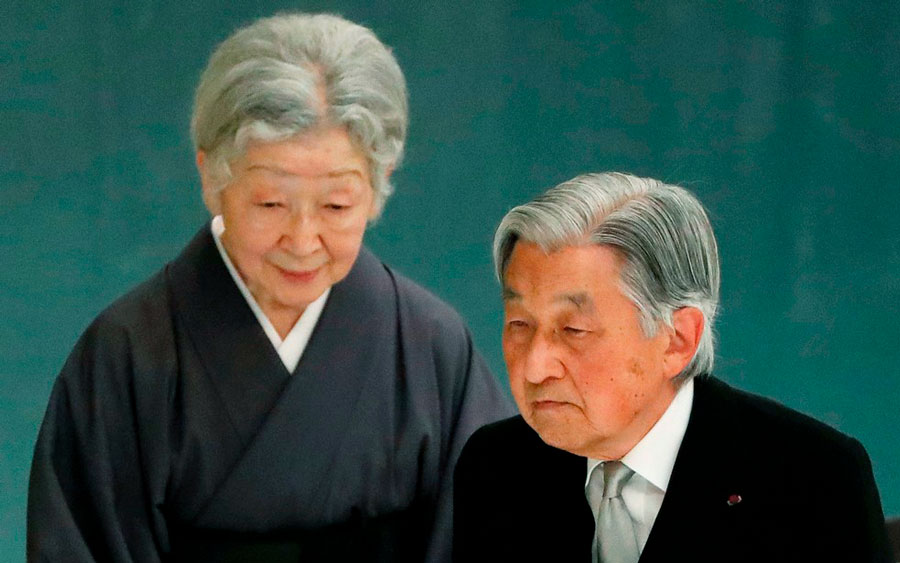
Empress Michiko with Emperor Akihito, who in 2000 granted Nishiyama the Order of the Sacred Treasure, Golden Rays with Rosette – Photo Reuters / Toru Hanai
In response to the growing global interest in karate, the attempt to change its true philosophy within WUKO, and with the prospect of recognition of karate by the International Olympic Committee (IOC), two years later, in 1974, AAKF was transformed into International Amateur Karate Federation, sensei Nishiyama being its first Chairman. In 1975 the first world karate championship was held in Los Angeles (USA), a joint initiative by IAKF and JKA with the participation of several international delegations. The world championship was repeated successively in Tokyo (1977), Bremen (1980) and Cairo (1983).
IOC impositions lead to the emergence of ITKF
IOC bureaucrats demanded a high price for formal recognition of karate: changing fundamental rules, in the name of safety and plastic beauty.
Nishiyama Sensei has never given up on preserving the true technique and spirit of karate. His words were – “We only want to participate in the Olympic Movement if it is good for Karate-Do, we are not going to change Karate-Do to serve the Olympic Movement”.
The World Union of Karate Organizations (WUKO) has accepted the IOC’s impositions. Then came the so-called sports karate.
Nishiyama Sensei was adamant. “I would never accept the distortion of our art.” Thus traditional karate was born. IAKF was renamed in 1985 and became the International Traditional Karate Federation (ITKF).
ITKF was not born to be a competition organization. It was formed to maintain the continuity of traditional karate and its main objective: the individual’s holistic development for life through the maxim: Jinkaku Kansei ni Tsutomuro Koto (Working hard to cultivate human nature). The ideograms JIN and KAKU together mean much more than “character”, moral bias. It is the personality, the essence of each person, under moral, physical, biological, spiritual, intellectual and psychological bias. Competition is nothing more than a tool to be used for the development of qualities in the individual who is dedicated to the study of traditional karate-do.
The 1990 crisis and the championship Lima World Cup
Nishiyama’s systematic refusal to align the ITKF with the WUKO created a crisis with the IOC, which required the merger of the two organizations.
In the early 1990s there was an international race of national karate federations from several important countries for WUKO, much more aligned with the IOC’s idea of sports karate. On the other hand, ITKF was going through a moment of great fragility.
The 1990 world championship was scheduled to be played in Argentina. At the time, the super-powered Argentine Karate Federation (FAK), however, had recently migrated to WUKO and canceled the event. Sensei Nishiyama called his Peruvian friend Eduardo Wayo Salas and asked for help: “Wayo, we need to do the ITKF World Championship. I know you can organize it.”
And so, Sensei Wayo Salas started his work by calling friends and using resources from his own pocket moved on. Nishiyama Sensei knew his spirit, so he bet all his chips on him.

TKF General Secretary, Michael Crowe, Luiz Küster and Luigi Puricelli members of the Constitution Executive Committee
Countries of great representation in world karate, led by personal friends of Master Nishiyama, began to confirm their participation: in addition to the United States and Peru itself, Italy by sensei Shirai, Brazil by sensei Tanaka, Yugoslavia by sensei Jorga, the Canada by Sensei Jorgensen, Argentina, and the list kept growing.
Sensei Salas, in a recent interview with Revista Budô, stated: “This event was a magical moment, especially for ITKF and traditional karate. It occurred at a time of great fragility, but, contrary to expectations, the traditional one came out refreshed.”
In this which was the first exclusive ITKF world championship, three extremely important historical events occurred. The first was the refusal, approved by the General Assembly to accept the impositions of the IOC for changing rules that would remove the essence of karate-do. Then it was the achievement of first place in kumite by Argentine Luis Alberto Vásquez, a practitioner of the Shorin Ryu school, and with that the ITKF showed the world to be an eclectic and global organization of traditional karate made up of several Japanese schools.
The third and most important event was the holding of the General Assembly, which, composed of representatives from more than 40 countries, approved the constitution (statute) of the International Traditional Karate Federation (ITKF).
Constitution
The foundation of an organization, company or even of a country occurs at the moment of the promulgation of its Constitution. It is there that the set of rules, fundamental policy, principles, structure, procedures, powers, rights and duties of members, shareholders or citizens are established, which vary according to the purpose of the company or institution.
The ITKF general assembly that took place in 1990 in Lima, Peru, was attended by more than 40 countries. It was sensei Hidetaka Nishiyama himself who chose the board of directors for the work, composed by Tori Aiko, director of ITKF; Eduardo Wayo Salas, president of the Peruvian Federation of Traditional Karate; Vladimir Jorga, director of ITKF, president of the European Federation and the Yugoslav Federation of Traditional Karate; shihan Hidetaka Nishiyama, president of ITKF; Michael Crowe, ITKF general secretary; Luiz Alberto Küster, president of the Brazilian Confederation of Traditional Karate; and Luigi Puricelli, president of the Italian federation and general secretary of the European federation.
Then president of CBKT, and current ITKF general secretary, Luiz Alberto Küster told Budô magazine that the ITKF statute was unanimously approved. “It was three days of intense work. In the end, the ITKF Constitution was unanimously approved.”
“The Constitution established the basic purpose of the ITKF: to popularize and develop traditional karate, to promote the strengthening of friendly relations between member organizations, to seek the development of the sports spirit and, thus, contribute to the perfection of human character.”
Shihan Hidetaka Nishiyama defined that victory is not the ultimate goal of traditional karate. Traditional karate is an art of self-defense that uses only the human body in its most effective way. All of its rules should help and motivate the participant in the pursuit of character perfection through unlimited physical and mental efforts. Its main element is the todome. All training methods must incorporate respect for the opponent.
Sensei Vladimir Jorga told Budo that the approval of the Constitution in those days was an exceptional event, as it laid the foundation for the future development of karate in the world. “In addition, it fostered the formation of regional and continental organizations such as the federations of Pan-America, Europe, Asia-Oceania and Africa”, said the leader, who continued: “I evaluate that general assembly of the approval of the Constitution as historical, because besides of the registration of that extraordinary document, it was the first official meeting that followed the transformation of IAKF into ITKF.”
Jorga Sensei ended by highlighting the legacy of sensei Nishiyama. “This was the great legacy left by Master Nishiyama: the creation of the IAKF-ITKF, the introduction of the coach’s manual, the competition rules and, mainly, the transmission of knowledge in international field training held in the summer in San Diego (California).”

Among the leaders who participated in the Lima meeting were Wayo Salas, Peru; Dr. Jorga, Yugoslavia; Sensei Nishiyama, ITKF Chairman; Michael Crowe, ITKF General Secretary; Luiz Alberto Küster, Brazil; Luigi Puricelli, Italy
ITKF today
Sensei Nishiyama passed away on November 7, 2008 in Los Angeles and posthumously received a juu-dan (10th dan) graduation on October 10, 2009, from Richard Jorgensen, his fighting friend with the IOC and an active participant in the creation of IAKF and ITKF, which succeeded it.
At the award ceremony, Jorgensen revered the founder of ITKF and one of the greatest leaders in karate worldwide. “Today, while honoring the memory of our great leader, on the one-year anniversary of his passing, we will be committed to dedicating our training to the work and legacy of sensei Nishiyama.”
Jorgensen Sensei recalled that Nishiyama refused to receive the distinction in life. “He believed that to be awarded the highest rank meant that his learning and his life would be over… he would never accept the rank while he lived.”
Currently chaired by Professor Gilberto Gaertner, ITKF remains alive and strong, completing 35 years. The last edition of the world championship in Curitiba (PR), with the participation of more than 40 countries, was an absolute success. According to current leaders, the organization is adapting to the new times, but the tradition continues.

17 de abril de 2024
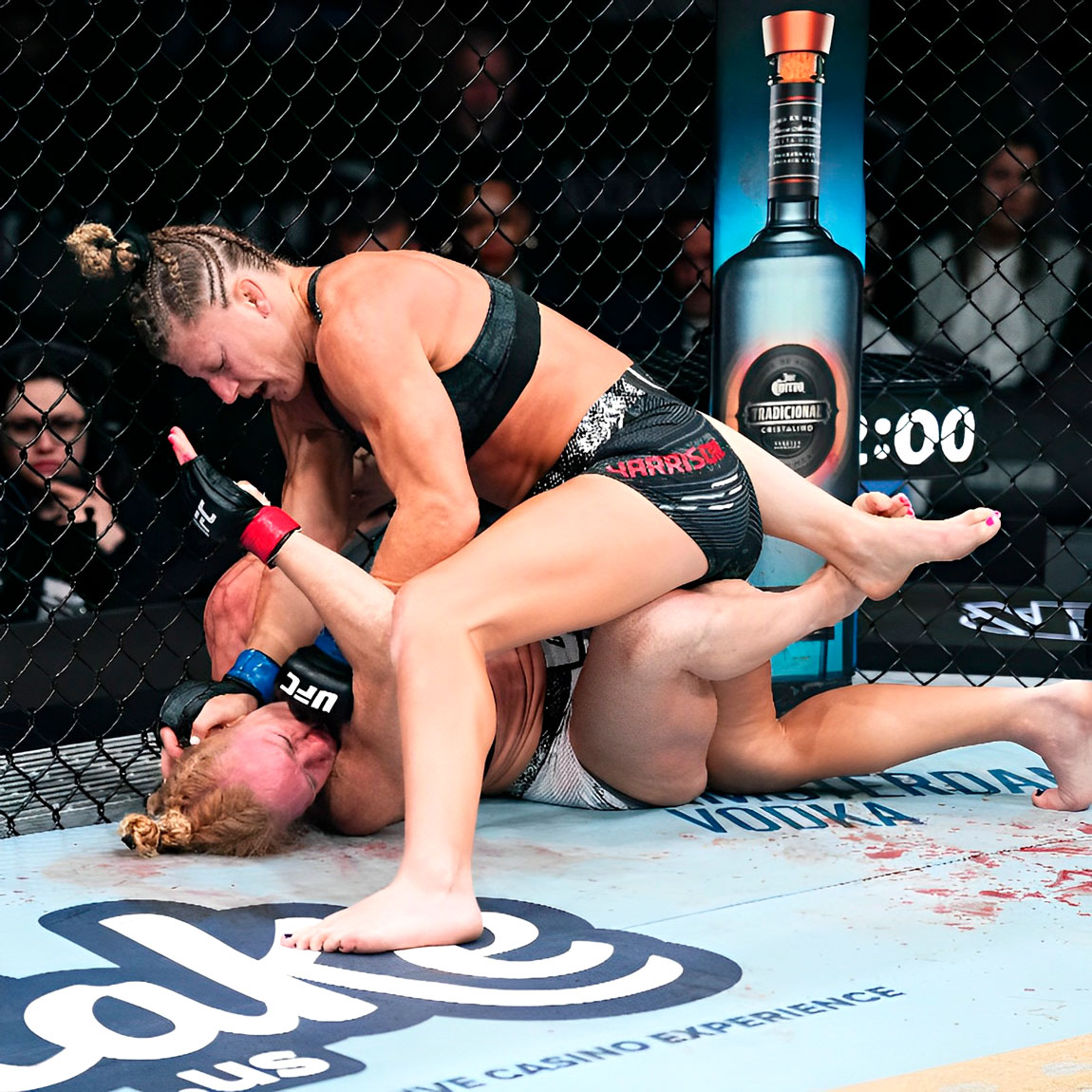
16 de abril de 2024
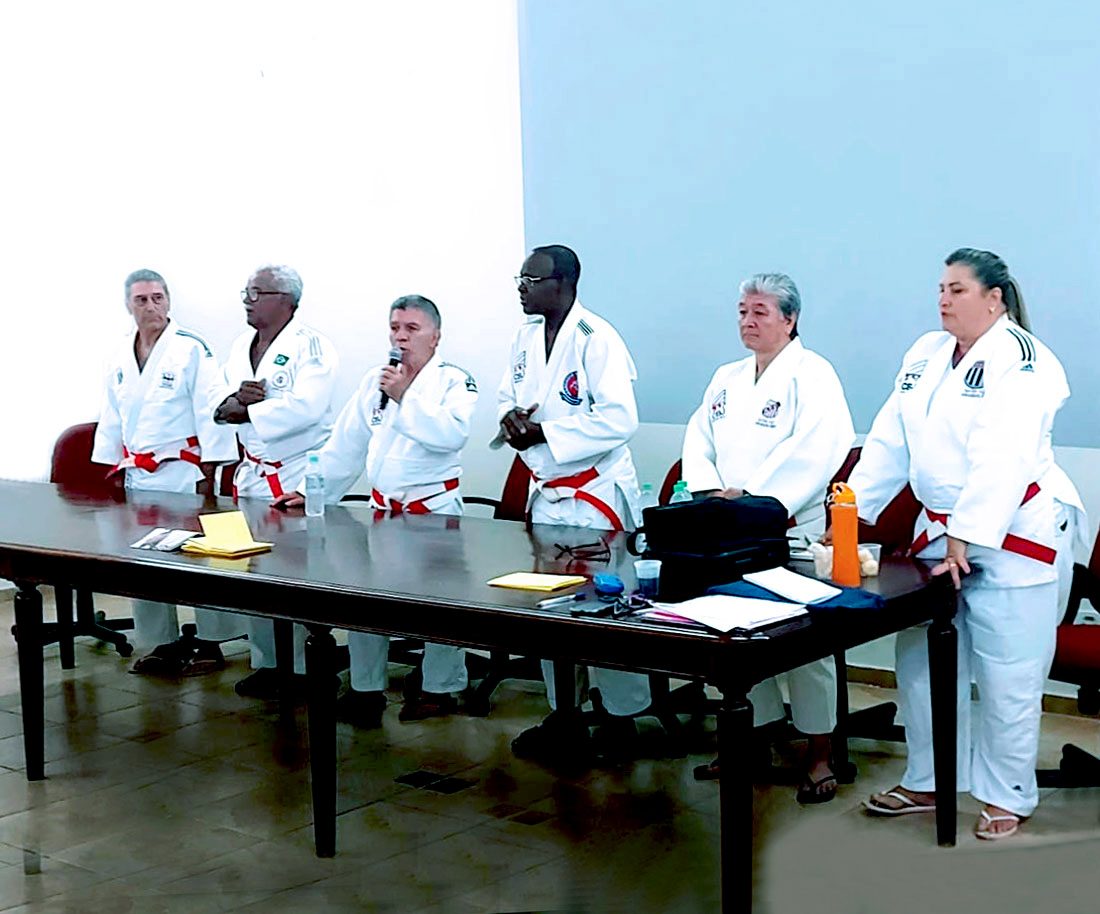
16 de abril de 2024